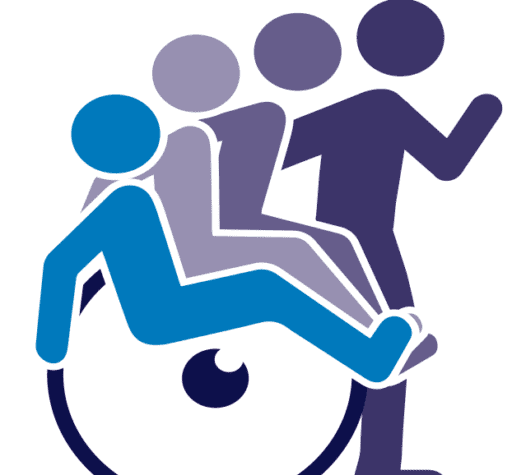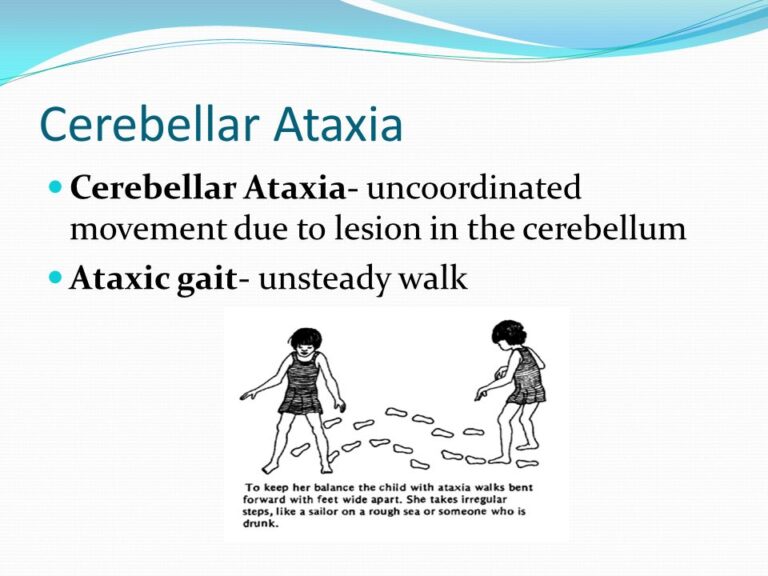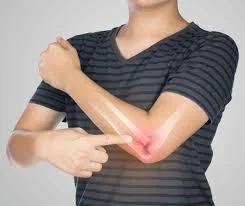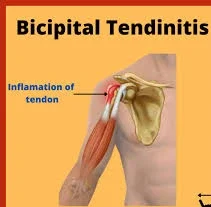Buttock Muscle Pain
Table of Contents
Introduction:
Buttock muscle pain refers to discomfort or soreness in the muscles of the buttocks, often caused by muscle strain, overuse, injury, poor posture, or underlying conditions such as sciatica or bursitis.
Buttock muscles are essential for maintaining proper posture, facilitating running, climbing, and walking, as well as for stabilizing the hips and pelvis.
Muscle strains, injuries, extended sitting, and underlying medical disorders that impact the muscles, nerves, or joints can all cause pain in this area.
Buttock pain can be slight and temporary or severe and chronic, depending on the reason. It frequently interferes with everyday activities, including standing, sitting, and working out.
Anatomy of Buttock Muscle Pain:
Strong, responsible muscles that are essential for stability, posture, and mobility make up the buttock area. The smaller gluteus minimus, which aids in comparable movements and provides additional pelvic support, and the larger gluteus medius, which helps raise the leg to the side and maintains the pelvis steady during walking, are located beneath it.
The piriformis, a little muscle located deep within the buttock that twists the thigh outward, is near the sciatic nerve and, when disturbed, is a common cause of buttock pain associated with nerves. Buttock muscle pain can result from strain, injury, or nerve pressure in any of these muscles, which work together to stabilize the hips and spine and power lower body movements.
Common Causes of Buttock Muscle Pain:
Numerous disorders that impact the muscles, nerves, or surrounding structures can cause buttock muscular pain. Muscle strain or overuse, frequently caused by vigorous activity, sports, or heavy lifting, is one of the most common causes. Muscle stiffness and soreness can also result from extended sitting or a sedentary lifestyle.
Pain that may spread down the leg can occasionally be caused by piriformis syndrome, which occurs when the piriformis muscle irritates the neighboring sciatic nerve. Sciatica, which is caused by compression of the nerves in the lower back, can also cause tingling or numbness in the buttocks.
Additional potential causes include hip joint issues, including arthritis, traumas or trauma from falls or accidents, and bursitis, which is inflammation of fluid-filled sacs in the hip. Since the sacroiliac joint or lower back can also refer pain, a precise diagnosis is crucial for successful therapy.
Symptoms of Buttock Muscle Pain:
Depending on its source and intensity, buttock muscle pain can manifest in a variety of ways. A dull pain, acute pain, or a throbbing sensation in one or both buttocks is are typical symptom. If nerves are affected, the pain may remain localized or radiate down the leg, hip, or thigh. It can be challenging for many people to walk, climb stairs, or get up from a seated position due to muscle tightness or spasms. Activities like extended sitting, running, or bending frequently make pain worse.
Other symptoms, including numbness, tingling, or burning sensations, may manifest in nerve-related conditions like sciatica or piriformis syndrome. Pain may sometimes be accompanied by swelling, soreness to the touch, or weakness in the affected limb, particularly if there is inflammation or damage.
Risk Factors of Buttock Muscle Pain:
Buttock muscle pain can be more likely to occur due to several circumstances. Running, cycling, and heavy lifting are examples of activities that can cause overuse or repetitive tension on the gluteal muscles.
Long periods of sitting and a sedentary lifestyle can weaken and tense these muscles, increasing their susceptibility to pain. Because these illnesses can result in referred pain to the buttocks, those with hip joint difficulties, lower back problems, or conditions like arthritis are also more vulnerable. Furthermore, trauma, obesity, sports injuries, and a lackluster pre-exercise warm-up can all increase the likelihood of experiencing pain in this region.
Diagnosis:
Finding the underlying cause of buttock muscle pain requires a combination of a physical examination, medical history, and, if necessary, imaging testing. A physician will start by inquiring about the pain’s onset, recent activities, injuries, lifestyle choices, and any concomitant symptoms like radiating pain or numbness. They may do specific tests to identify joint problems or nerve involvement during the physical examination, as well as assess muscle strength, range of motion, flexibility, and tenderness.
Imaging tests like X-rays (to evaluate bones and joints), MRI scans (to view soft tissues, muscles, and nerves), or ultrasounds (to identify muscle tears or inflammation) may be ordered if additional assessment is required.
Electromyography (EMG) or nerve conduction investigations can be used to identify the precise location of irritation or compression in nerve-related disorders. To guarantee that the treatment strategy addresses the underlying cause of the pain, an accurate diagnosis is crucial.
Treatment of Buttock Muscle Pain:
Home Care & Self-Management:
Simple self-care techniques can frequently be used to alleviate mild buttock muscle pain at home. While rest is necessary for the muscles to recover, total inactivity should be avoided to avoid stiffness; instead, mild exercise is helpful. After the initial swelling goes down, heat therapy, such as using a warm compress or heating pad, may help relax tense muscles and promote blood flow.
During the first 24 to 48 hours, applying ice packs can help reduce inflammation and dull pain. While a brief massage can relieve muscle tension, gentle stretching exercises for the hips, hamstrings, and glutes can help restore flexibility.
To lessen the strain on the buttock muscles, it’s also critical to choose ergonomic seating, take breaks from extended sitting, and maintain proper posture. Recurrence can be avoided and rehabilitation can be accelerated by staying active with low-impact exercises like swimming or walking.
Medical Treatments:
Medical therapies may be required if at-home care fails to alleviate buttock muscle pain or if it is associated with an underlying ailment. To alleviate pain and inflammation, doctors frequently start with nonsteroidal anti-inflammatory medications (NSAIDs) or other painkillers. To relieve severe muscle spasms, doctors may give muscle relaxants.
A popular strategy for addressing muscular imbalances and preventing recurrence is physical therapy, which emphasizes stretching, strengthening, and posture correction. Corticosteroid injections may be given directly into the affected location or adjacent joints to provide focused treatment for chronic inflammation.
Certain therapies, such as nerve blocks or guided physical therapy approaches, may be used if nerve compression, like sciatica, is present. Surgical surgery may be recommended in rare and severe cases, such as unresolvable nerve compression, herniated discs, or extensive structural damage. The underlying reason, the intensity of symptoms, and personal health concerns all influence the therapy decision; therefore, a precise diagnosis is necessary before moving forward.
Surgical Treatments:
When conservative measures are ineffective and the underlying cause of buttock muscle pain is severe or progressive, surgery is typically considered a last resort. Significant nerve compression (from a herniated disc or spinal stenosis, for example), severe piriformis syndrome that is unresponsive to treatment, or structural abnormalities in the hip or spine may necessitate surgery.
Common procedures include joint surgeries for advanced arthritis or labral tears, repair of injured muscles or tendons, and nerve decompression surgery to relieve pressure on the sciatic nerve. Procedures like microdiscectomy or laminectomy may be used in cases involving spine disorders to eliminate the cause of nerve irritation.
The length of recovery varies based on the type of surgery, but it usually includes physical therapy and rehabilitation to regain function, strength, and mobility. When no other treatment is left, surgery is used to treat the underlying issue, reduce pain, and enhance quality of life.
Physical Therapy Treatments:
Stretching & Strengthening Exercises:
Seated Figure-Four Stretch:
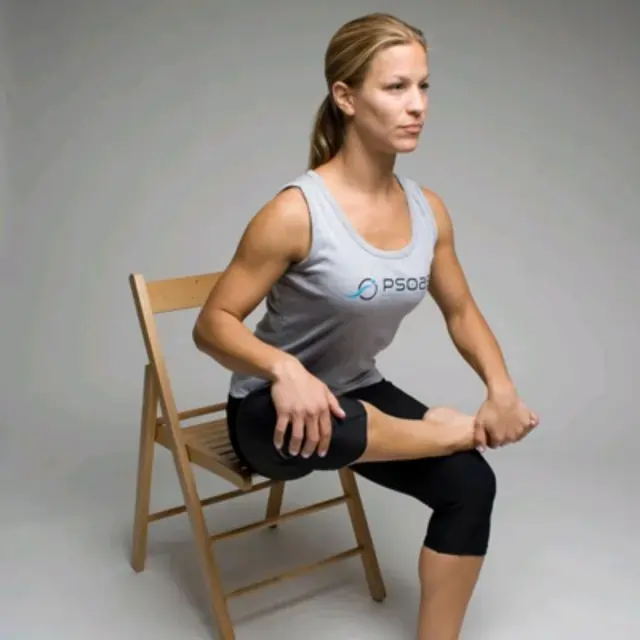
The figure-four stretch is a straightforward yet powerful exercise that works the piriformis and glute muscles, reducing buttock pain and increasing hip range of motion. You can do it by lying on your back with your knees bent or by sitting in a chair.
Pull the supporting leg toward your chest if you’re lying down, or gently press the crossing knee outward while maintaining a straight back if you’re sitting, until your outer hip and buttocks feel stretched. This stretch is particularly beneficial for minimizing nerve irritation in illnesses like Piriformis syndrome and relieving stress from extended sitting.
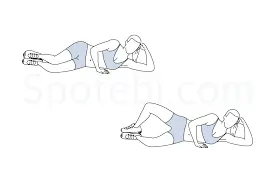
A strengthening exercise that works the gluteus medius and minimus, clamshells serve to prevent muscular imbalances, stabilize the hips, and lessen buttock soreness. This exercise involves lying on your side with your legs stacked and your knees bent at a 90-degree angle. Lift your upper knee slowly upward while maintaining foot contact, much like opening a clamshell, while keeping your feet together and your core active. Do ten to fifteen reps on each side.
A looped resistance band can be positioned just above the knees to provide more resistance. Clamshells are particularly helpful for enhancing posture, promoting hip stability, and lessening the strain on the buttocks and lower back.
Piriformis Stretch:
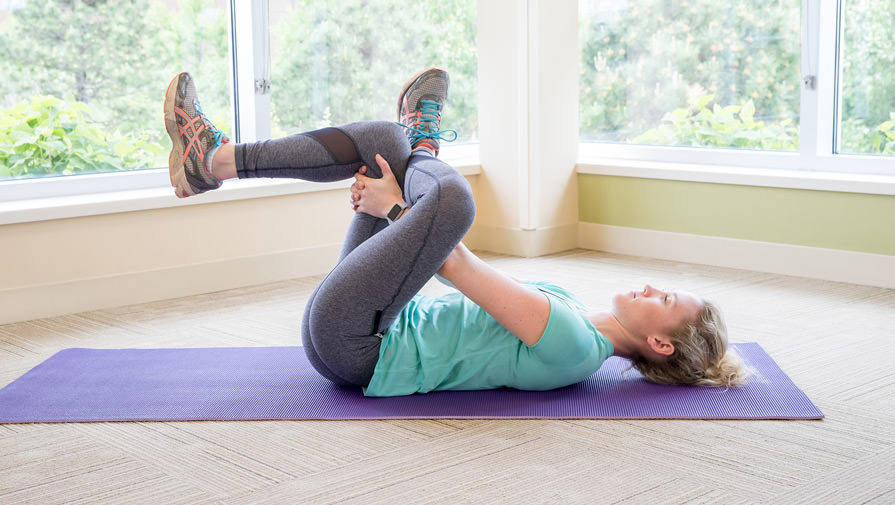
The purpose of the piriformis stretch is to lengthen and relax the piriformis muscle, which is located deep in the buttocks and occasionally presses against the sciatic nerve, resulting in pain. With your feet flat on the floor, bend both knees to perform this stretch while lying down. Pull the uncrossed leg gently toward your chest until your buttocks begin to expand. This stretch eases tight muscles, increases hip range of motion, and lessens nerve-related pain that travels down the leg from the buttocks.
Standing Hip Abduction:
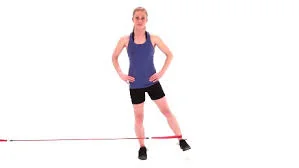
A strengthening exercise for the gluteus medius and minimus, which are crucial for hip stability and balance, is standing hip abduction. Hold onto a wall or strong chair for support while performing it while standing erect with your feet hip-width apart. Without bending your body, steadily raise one leg out to the side while maintaining an engaged core and forward-pointing toes.
Lift the leg to a comfortable height, take a brief break, and then carefully lower it again. Do ten to fifteen reps on each side. Use a resistance band or ankle weight around your legs for added challenge. Walking and posture are enhanced, buttock pain is lessened, and the outer hip muscles are strengthened with this activity.
Side-Lying Leg Lifts:
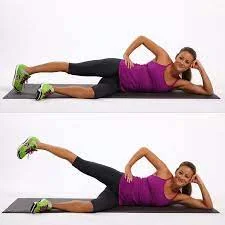
The gluteus medius, gluteus minimus, and outer thigh muscles are important for hip stability and lowering buttock pain, and side-lying leg raises are a good way to strengthen them. With your toes pointed forward and your core active, slowly raise your top leg to roughly a 45-degree angle, rest for a moment, and then carefully lower it back down.
Do ten to fifteen reps on each side. You can use a resistance band or wear ankle weights for additional resistance. In addition to strengthening the buttock muscles, this exercise also assists with balance and posture.
Hamstring Stretch:
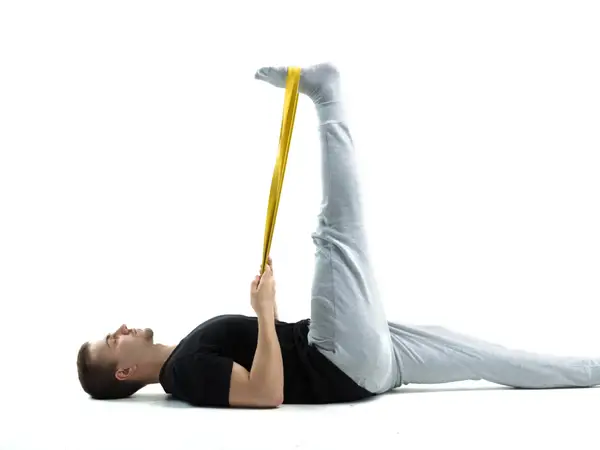
The back of the thigh muscles, which attach to the hips, can cause buttock pain if they are tight. The hamstring stretch helps release these muscles. Sitting on the edge of a chair with one leg straight out in front of you, heel on the floor, and toes pointed upward is how you do this stretch while seated. To feel a stretch along the back of your thigh, softly lean forward from the hips while maintaining a straight back.
As an alternative, you can perform it standing by hinging forward at the hips and resting one heel on a low bench or step. Stretching the hamstrings regularly helps increase lower body mobility, decrease gluteal tension, and improve flexibility.
Hip Flexor Stretch:
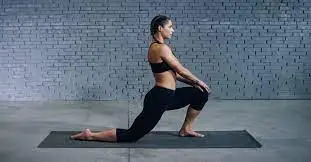
By changing pelvic position, the hip flexor stretch helps to loosen up the muscles in the front of the hip, which can become tense from extended sitting and cause buttock pain. Kneel on one knee and place the other foot in front of you to create a 90-degree angle at both knees for this stretch.
Maintaining an upright posture, slowly move your weight forward until you notice a stretch in the front of the kneeling leg’s hip and thigh. For stability, keep your core active and avoid arching your lower back. This stretch promotes balanced muscle function in the lower body, eases stress, and increases hip mobility.
Cat-Cow Stretch:
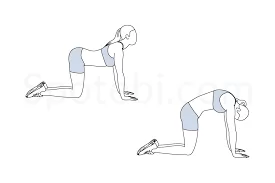
The cat-cow stretch is a soft, flowing motion that helps to stretch the hips and back, increase spinal flexibility, and relieve buttock pain caused by pelvic and lower back rigidity. To do it, begin on your hands and knees, placing your knees beneath your hips and your wrists beneath your shoulders.
Inhale as you arch your back into the cow position, letting your tummy sink and raising your head and tailbone toward the ceiling. For five to ten repetitions, keep switching between these two postures gently. This stretch facilitates better posture, relieves hip and lower back tension, and increases spinal mobility.
Child’s Pose:
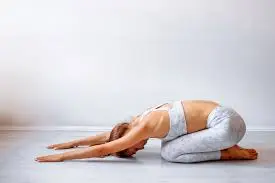
Child’s pose is a mild stretching position that increases general flexibility and eases the muscles in the buttocks, hips, and lower back. Breathe deeply while letting your forehead rest on the mat and experiencing a mild stretch throughout your lower back, hips, and buttocks. This pose can assist in relieving mild buttock muscle soreness and is particularly helpful for releasing tension after extended sitting or physical exercise.
Quadriceps Stretch:
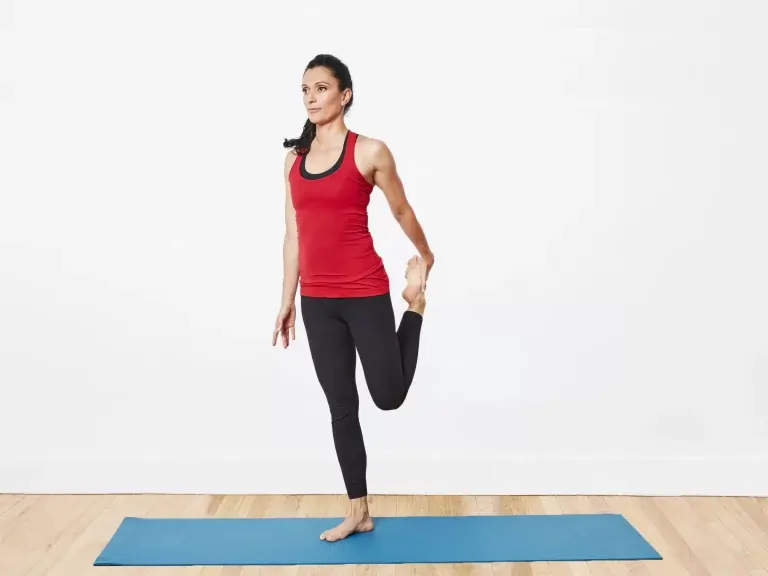
The stretch for the quadriceps focuses on the big muscles at the front of the thigh, which can cause buttock pain and alter pelvic alignment when they are tight. Hold onto a wall or sturdy chair for balance when performing this stretch standing exercise. Grasping your ankle with your hand, bend one knee and bring your heel toward your buttocks.
Pull your foot softly closer till you feel a stretch over the front of your thigh while keeping your knees close together and your torso upright. This stretch promotes balanced muscle activity in the lower body, eases hip and lower back strain, and increases quadriceps flexibility.
Pigeon Pose:
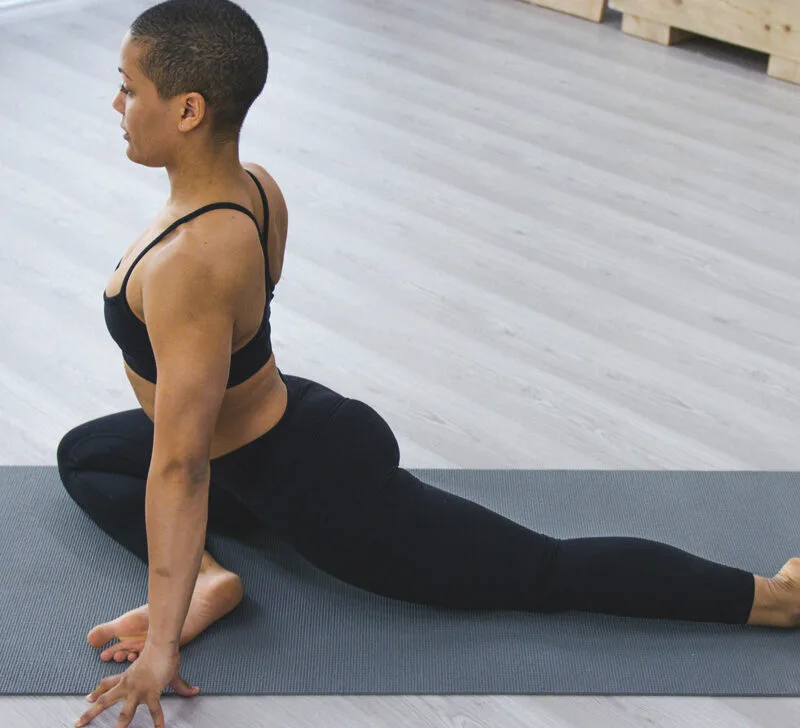
Pigeon position is a deep hip-opening stretch that helps increase flexibility and reduce buttock pain by targeting the glute muscles, piriformis, and hip flexors. It is done by bringing your right knee forward and placing it behind your hands, angling your shin so that your right foot sits close to your left hip. You begin by assuming a downward-facing dog position or plank.
For a deeper stretch, completely extend your arms forward or rest your chest on your forearms as you gently descend them toward the floor. Breathe deeply while holding for 20 to 30 seconds, then swap sides. This pose facilitates improved lower body mobility, lessens nerve compression, and eases hip and buttock tension.
Wall Sit:

An isometric exercise called a wall sit helps to stabilize the hips and lessen buttock pain by strengthening the glutes, quadriceps, and hamstrings. Breathe deeply while holding this position for 20 to 60 seconds, then slowly raise yourself back up. Without putting undue strain on the joints, wall sits increase lower body strength, stability, and endurance.
Step-Ups:
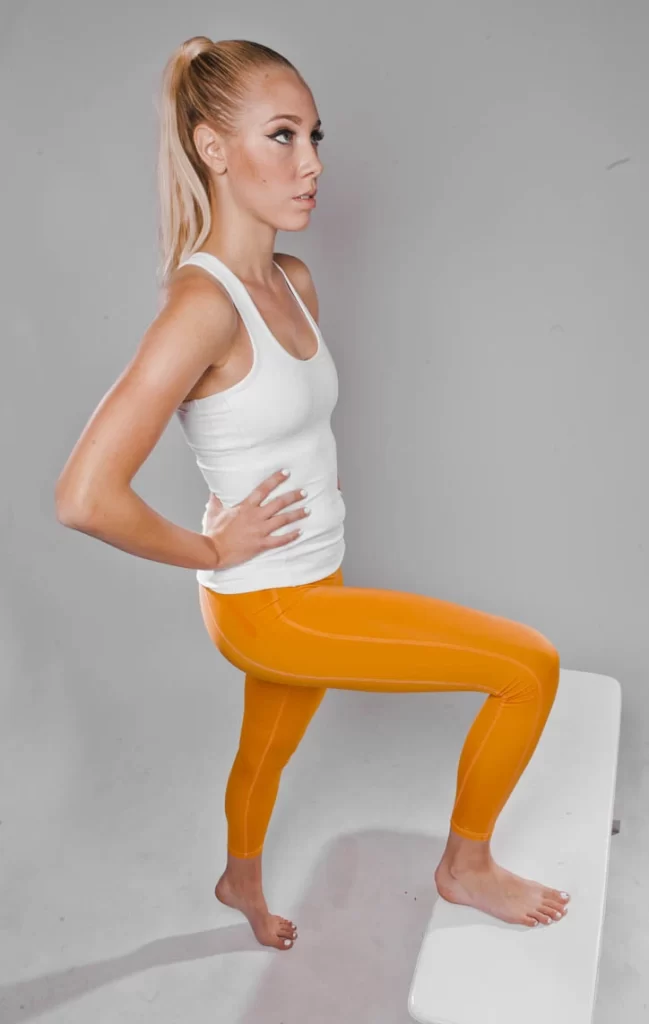
To do them, stand knee-high in front of a stable platform, step, or bench. Press through your heel, plant your right foot firmly on the platform, and raise your body until your right leg is completely straight. Controllably step back down, starting with your left foot, and repeat as many times as you like before switching sides. Raise the platform’s height or grip dumbbells in each hand for an extra challenge. Step-ups are useful for strengthening buttock muscles and easing pain since they replicate common motions like climbing stairs.
Bird Dog:
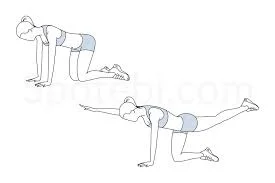
The bird dog strengthens the glutes and core while also enhancing posture, balance, and stability, which lessens the strain on the buttocks and lower back. To do it, begin on your hands and knees, placing your knees beneath your hips and your wrists beneath your shoulders.
Return to the beginning position gradually after holding for a few seconds while keeping your balance. Do 8–12 repetitions on each side. In addition to encouraging healthy hip stability and spinal alignment, this exercise works the glutes, hamstrings, and core muscles.
Knee-to-Chest Stretch:
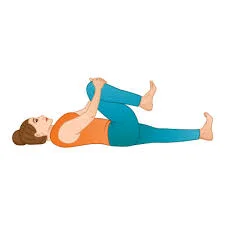
The knee-to-chest stretch is a mild exercise that relieves tension in the hip, lower back, and gluteal muscles, which can lead to buttock pain. Keeping the other leg level and relaxed on the floor, bend one knee and use both hands to gently draw it toward your chest. You can simultaneously draw both knees to the chest for a deeper stretch. This stretch increases buttock muscle relaxation, reduces lower back stiffness, and increases flexibility.
Foam Rolling for Glutes:

A self-massage method that helps relieve muscle tension, increase blood flow, and lessen buttock stiffness is foam rolling for the glutes. To do it, place your feet level on the floor and bend your knees while sitting on a foam roller. To work the glutes more thoroughly, cross one ankle over the other knee.
Roll slowly from the top of the glutes to just above the hamstrings while leaning slightly toward the side of the crossed leg. On each side, spend 30 to 60 seconds, stopping to let the muscle relax in sensitive areas. To improve flexibility, hasten healing, and avoid more buttock muscle soreness, foam rolling can be done either before or after exercise.
Prevention of Buttock Muscle Pain:
Maintaining strong, flexible muscles and avoiding behaviors that place undue tension on the hips and lower back are key to preventing buttock muscle pain. Frequent core, hip, and gluteal strengthening and stretching exercises increase stability and lower the chance of injury. Muscles are kept pliable and prepared for activity by warming up before workouts and cooling down afterwards.
Use an ergonomic chair to promote good posture and take brief standing or walking breaks to avoid extended sitting. Strain can be avoided by using proper lifting techniques, such as bending at the knees and maintaining a straight back. You can greatly reduce your risk of buttock muscle soreness by combining regular exercise, good body mechanics, and healthy lifestyle choices.
Prognosis:
When the underlying cause of buttock muscle pain is found early and treated effectively, the prognosis is usually favorable. With rest, stretching, and strengthening exercises, the majority of instances caused by muscle strain, overuse, or minor injuries get better in a matter of days to weeks.
Although they may take longer, conditions like moderate sciatica or piriformis pain frequently improve with physical treatment and lifestyle changes. To preserve comfort and function, chronic or recurrent pain associated with arthritis, nerve compression, or structural problems may need to be managed continuously.
Most people can anticipate a full restoration to normal mobility and a low risk of long-term problems with the right care, activity moderation, and preventive measures.
Complications of Buttock Muscle Pain:
Several issues may arise if buttock muscle pain is not treated or its underlying cause is not addressed. Reduced mobility and trouble carrying out regular tasks like walking, climbing stairs, or sitting for extended periods can be caused by chronic pain. Chronic pain can also lead to muscle weakness or imbalance, which puts additional strain on the legs, hips, and lower back.
Chronic nerve irritation can result in numbness, tingling, or even long-term sensory and motor impairments in nerve-related conditions such as untreated sciatica or piriformis syndrome. Long-term inactivity caused by pain can lead to weight gain, bad posture, inflexible joints, and a decline in cardiovascular fitness. Chronic pain can also have a detrimental impact on mental health, possibly resulting in anxiety, despair, or insomnia.
Conclusion:
Common causes of buttock muscle pain include overuse, nerve irritation, muscular strain, and underlying joint and spinal problems. The majority of instances improve with prompt treatment that involves rest, stretching, strengthening exercises, and lifestyle modifications, even though it can range from little pain to severe, activity-limiting pain.
Accurate diagnosis and successful treatment depend on an understanding of the anatomy, causes, and symptoms. The chance of recurrence can be significantly decreased by using preventive techniques, such as preserving flexibility, strengthening muscles, adopting proper posture, and avoiding extended periods of sitting.
Most patients can recover completely, regain their mobility, and resume their regular activities without any long-term issues if they receive the right care and receive early intervention.
FAQs
Sitting-related buttock pain can be caused by a variety of disorders, ranging from minor bruises and scrapes to more serious ones like sciatica and disk damage. Since people spend so much time sitting down, it can be concerning when they experience buttock pain.
Osteoarthritis, sciatica, piriformis syndrome, sacroiliac joint dysfunction, hamstring tendonitis, trochanteric bursitis, coccydynia, and hemorrhoids are some of the many conditions that can cause buttock pain.
The main cause of sciatica buttock pain is compression or irritation of the sciatic nerve, which is typically caused by a herniated disc or spinal stenosis in the lower back. Other conditions, including piriformis syndrome, infections, or spinal tumors, can also cause this nerve compression.
The lateral piriformis trigger point is located along the piriformis line, a few inches inside the greater trochanter landmark. These two buttock piriformis trigger points can send pain to the posterior hip, sacroiliac joint, and general buttocks.
The examiner places the piriformis on a stretch that compresses the sciatic nerve by stabilizing the hip and applying downward pressure to the knee to internally twist and adduct the hip.
With rest, mild piriformis syndrome pain may go away in one to two days. Acutely inflamed, irritated, or swollen piriformis muscles can cause pain that lasts for days or weeks. To keep the issue from becoming chronic, more focused treatment is required.
The gluteal muscle and fat make up the majority of the buttocks, which are situated in the back of your pelvis. Buttock pain can be defined as the uncomfortable feeling that develops in these structures due to an infection, strained muscles, an orthopedic injury, or neurological abnormalities.
Mild buttock pain might be relieved with home treatments. Relief can be obtained by using warm compresses or cold packs, doing mild stretches, taking over-the-counter painkillers, and obtaining enough sleep.
Muscle Strain or Overuse: Excessive physical activity, particularly that which uses the gluteal muscles, can cause cramping and straining of the muscles. Nerve Compression: Sciatica, which is caused by compression of the sciatic nerve, can produce buttock pain and cramping that travels down the leg.
When using massage therapy to address buttock pain, concentrate on relaxing the piriformis muscle and the adjacent gluteal muscles. Some methods include applying pressure to trigger points using a tennis or lacrosse ball and using your hands and forearms to massage deep tissue to release tension and knots in your muscles. It is also advantageous to stretch the piriformis muscle, either on your own or with a physical therapist.
Buttock pain can be caused by a variety of illnesses, ranging from infections to mild muscle strains. A visit to your doctor is necessary for some of these conditions, although the majority are not dangerous.
In addition to causing pain, numbness, and tingling throughout the back of the leg and into the foot, the piriformis muscle can aggravate the neighboring sciatic nerve.
Hemorrhoids and other irregularities in the buttocks can be the cause of buttock pain during pregnancy. Pain radiating from the lower back to the buttocks is another way to describe it. Although most pregnant women’s buttock soreness goes away after giving birth, some women may still have hemorrhoids.
Yes, buttock pain can be a symptom of hemorrhoids. Anal and buttock pain, irritation, and itching can be caused by hemorrhoids, which are enlarged veins in the rectum and anus. Other symptoms, such as bleeding or a fullness sensation, may accompany the pain, which can vary in intensity.
Numerous conditions, such as muscle strains, joint disorders (such as sacroiliac joint dysfunction), and nerve irritation (like sciatica), can cause buttock pain. Pilonidal cysts, bursitis, or even transferred pain from hip or spinal problems are other possibilities.
References:
- Nwachuku, A., DO. (2023, March 3). What causes buttock muscle pain, and how to relieve it. Spine-health. https://www.spine-health.com/blog/what-causes-buttock-muscle-pain-and-how-to-relieve-it
- Narayana Health. (n.d.). Narayana Health. https://www.narayanahealth.org/blog/buttock-pain-causes-and-treatment
- Watson, S. (2024, June 13). What’s causing this pain in my buttocks? Healthline. https://www.healthline.com/health/pain-in-buttocks
- Dpt, K. G. P. (2025, May 6). What causes buttock pain and how to relieve it. Verywell Health. https://www.verywellhealth.com/buttock-pain-6456216
- Clinic, O. (2025, March 10). What causes pain in the buttocks? The Orthopedic Clinic. https://orthotoc.com/buttock-pain-causes/
- Bridges. (n.d.). [Video]. Hingehealth. https://www.hingehealth.com/resources/articles/buttock-pain-when-sitting-and-lying-down/
- Clinic, A. a.-. M. (2024, December 11). Buttock pain. My MSK. https://mymskclinic.co.uk/buttock-pain/
